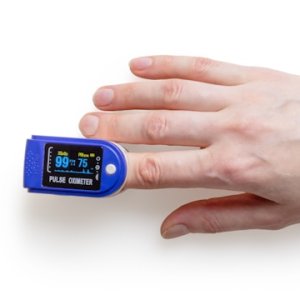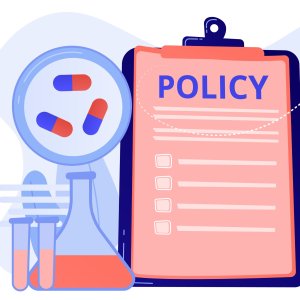
Technology a Boon for Companies, Patients
Digitalization and Industry 4.0 practices, including Big Data, are changing the shape of the medical devices segment, providing new opportunities for businesses and improving delivery of healthcare services for patients across the country, although many challenges remain
With the reduction of the health budget under the administration of Enrique Peña Nieto, medical devices companies have had to rethink their business models. The introduction of technologies to the public sector became more complex while the need to address the country’s epidemiological transition and the aging population through technology became increasingly important.
Given these conditions, medical devices companies are restructuring their portfolios and expanding into new digital offerings through new business models that can guarantee the greatest number of opportunities and reduce risks for healthcare providers, says Alejandro Paolini, General Manager of Siemens Healthineers Mesoamerica. “The benefits of innovation in the healthcare sector are already known, especially in a transforming environment like we are facing. Healthcare trends such as the increase of aging population, growing prevalence of chronic diseases, cost pressure and increased patient awareness have an impact on the sector. Siemens Healthineers understands that it is necessary to provide innovative solutions that allow our customers to succeed in this scenario.”
In 2017, the medical devices sector in Latin America experienced strong growth in countries such as Brazil, Panama, Guatemala, Costa Rica, Colombia and Argentina. Mexico was also in this group. Compared to 2016, Mexico enjoyed demand growth of 24 percent for MRI machines, more than 50 percent for nuclear medicine systems, 26 percent for stereo-tactic mammography machines and 17 percent for gamma cameras, according to Global Health Intelligence.
However, the medical devices segment, private industry and the government still have challenges to overcome. “The private sector has challenges in modernization and in using technology to offer specialized services and more productive schemes. While in the public sector, it is a priority to increase and improve access to medical care for Mexicans in all regions, rural and urban, more through the use of technology,” says Miguel Nieto, General Manager and Cluster Business Manager Mexico of Carestream.
Once Mexico integrates technological solutions and provides greater access to its population, the changes can be translated into benefits, with a total impact on the health system, since the impact of Industry 4.0 is not just in Mexico, but global. “Before the application of Industry 4.0 principles in healthcare, a doctor could only accumulate experience by caring for more patients; now, doctors have access to the experience of millions of medical cases. Also, this technology is helping hospitals outsource their management systems, allowing them to devote fewer resources to management and focus on providing care,” says César Carrasco, Country General Manager of Philips Mexico.

PROMOTING MODERNIZATION
The medical devices under CANIFARMA’s RSD division represent companies that can generate biometrics through clinical tests and diagnostics, which are fundamental in the pre and post-operative stages. This division also includes authorized manufacturers and distributors of medical devices in Mexico; thus, a collaboration between the medical devices and public health sectors could result in great benefits for the population, says Guillermo Ferrari, General Manager of Eseotres.
“Better coordination among health authorities is needed to promote the modernization of the health system. This coordination should begin with a homologation and a synchronization to modernize the country in a transversal manner. Integrative technologies such as RIS (Radiology Information System) and PACS (Picture Archiving and Communication System) already exist to integrate different providers into a single channel and to coordinate data systems,” he says.
A unified health system not only improves the provision of medical assistance, but also provides technological opportunities that impact the entire system. Before working with Big Data, Mexico requires a centralized national database of medical imaging studies, which in turn can impact the creation of patterns for clinical and diagnostic purposes, says Ferrari.
Such information would make it possible to determine which areas require improvements and which technologies are more suitable to provide efficient solutions. In addition, digitalization and the introduction of technology must go hand in hand with the training of doctors and patients to make these changes reality, says Carrasco.
FILLING THE TALENT GAP
Technology also redefines the acquisition and management of human talent. According to Tecnológico of Monterrey, health institutions face three main problems: unmet demand for medical specialists in radiology and imaging, a shortage of specialists and few educational institutions capable of providing the necessary training.
Yet, medical devices companies see in this an opportunity not a challenge. “Technology helps make radiologists more efficient; it gives them the ability to diagnose more studies at the same time using specific imaging tools,” says Ferrari. “These solutions make it possible to deliver technology to hard-to-reach areas and help solve the shortage of radiologists in the country.”
The next step to ensuring a greater impact of technology in the health sector is to revolutionize the way in which talent is deployed in a digital environment and collaborate to generate high-potential changes, according to Deloitte. The best opportunities will come when the new talent possesses the necessary technical, digital and engineering knowledge to provide solutions exclusively designed for healthcare.
HAND-IN-HAND PARTICIPATION
Medical devices and health technologies are also creating greater democratization of access to health and improving patient care. According to a joint study between WHO, WIPO and the WTO, collaboration among health, intellectual property and trade agencies is essential to improve access to medical and health technologies for the population.
The challenge for the future in matters of public health is, according to WHO, for countries to adopt sustainable financing schemes, reliable health systems and efficient regulations to guarantee access to innovative medicines and medical devices. Also, the government must ensure that the way to obtain and manage patents, trademarks and commercial rights also guarantees access. How these rules are applied can determine the availability of medicines and the prices that patients pay, so it is vital that governments and the industry work together to produce the best conditions to provide access to medicines and medical devices, according to the WTO.

















